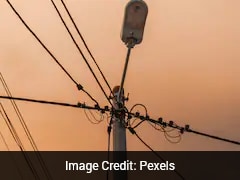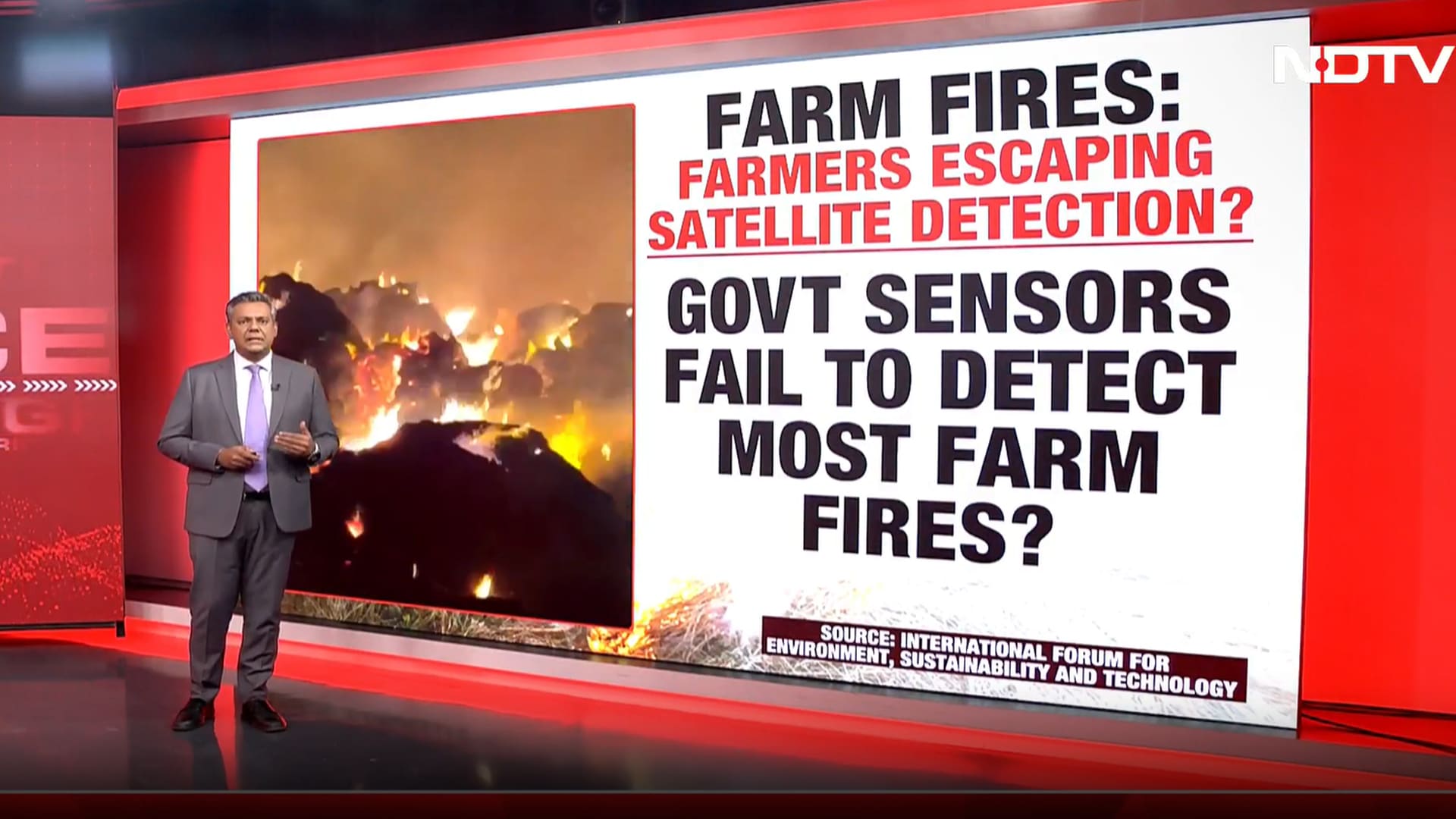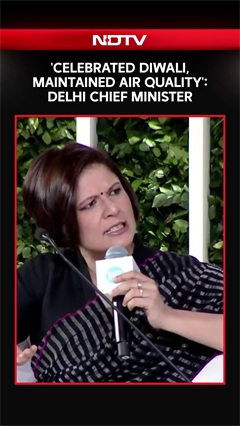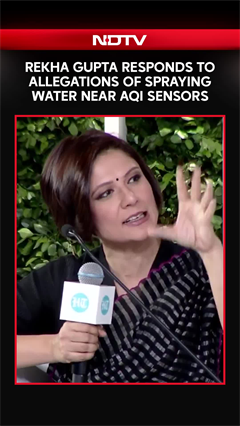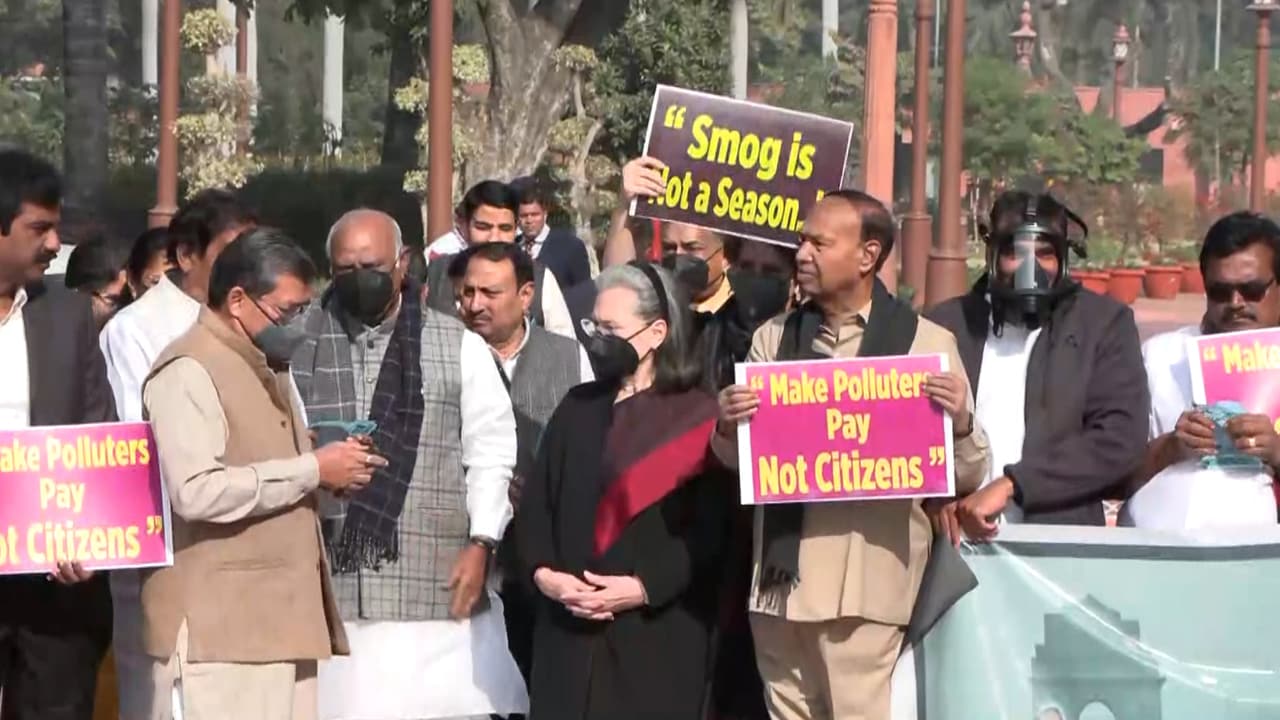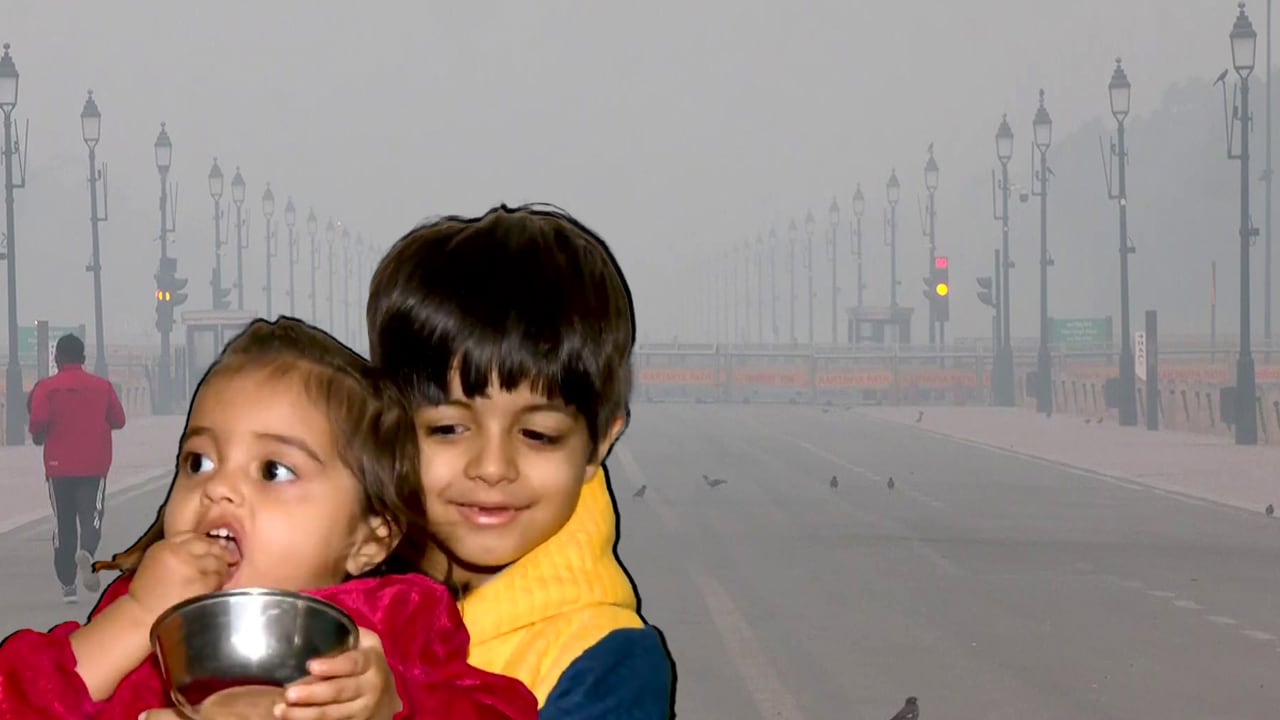- Home/
- Most Of Delhi's Pollution In October-November Locally Created: Study
Most Of Delhi's Pollution In October-November Locally Created: Study

Delhi-NCR's pollution during October-November is largely of local origin, with stubble burning in Punjab and Haryana contributing 14 per cent to the overall PM2.5 levels in 2022, a study has suggested.
Researchers, led by those at Japan's Research Institute for Humanity and Nature under the 'Aakash Project', said that changes in the national capital's air quality could be related more with the stepping up or down of the 'GRAP' anti-pollution measures.
The study, published in the journal 'npj Climate and Atmospheric Science', analysed fine particulate matter (PM2.5) data, recorded during the September-November months of 2022 and 2023. For the study, 30 sensors were installed across Punjab, Haryana and Delhi-NCR.
Stubble burning, a common practice for clearing land following rice harvest, is often blamed for the sharp and sustained rise in PM2.5 levels, seen in the national capital region during the October-November months.
However, the analysis showed that emissions over Punjab from burning stubbles "contributed only a meagre (nearly) 14 per cent to the overall PM2.5 over Delhi-NCR during October-November 2022".
Further, PM2.5 levels remained stable in Delhi, even as stubble fires in Punjab and Haryana (as recorded by satellites) declined by at least 50 per cent during 2015-2023, the authors said.
"This indicates that there exists only a very weak coupling between PM2.5 mass over Delhi-NCR and the (crop residue burning) over Punjab, highlighting the effectiveness of the Graded Response Action Plan (GRAP) in controlling air pollution in the region," the authors wrote.
GRAP refers to the set of anti-pollution measures, implemented in a staged manner in response to air quality levels. GRAP-4 is the most stringent, imposed when air quality index (AQI) crosses 450 and reaches 'severe plus' category.
The researchers observed that PM2.5 levels varied in line with the stepping up or down of the GRAP stages.
"The decrease of PM2.5 levels in Delhi-NCR was mainly attributed to GRAP IV when the major PM2.5 emissions from road traffic and construction activities, among other sources, were reduced. However, a rise in PM2.5 load was recorded after the revocation of GRAP IV for 2022 and 2023," they wrote.
"With the measurements at a network of about 30 sites covering Punjab, Haryana and Delhi NCR, we are able to separate the contributions of paddy straw burning to Delhi's PM2.5 variations on the basis of characteristic PM2.5 events and at week-monthly averages," said author Prabir Patra, the leader of Aakash Project and principal scientist at Japan Agency for Marine-Earth Science and Technology.
(This story has not been edited by NDTV staff and is auto-generated from a syndicated feed.)
also read
Latest Stories
- Press Trust of India | Wednesday December 10, 2025 , New Delhi
Amid high pollution levels in the capital, the Delhi Pollution Control Committee (DPCC) has issued directions mandating a strict ban on the use of coal and firewood in tandoors across all hotels, restaurants and open eateries in the city.
- Press Trust of India | Monday December 08, 2025 , New Delhi
Delhi's air quality remained locked in the 'very poor' category on Monday, with the air quality index (AQI) staying above 300, while forecasts suggest that pollution levels are likely to deteriorate further.
- Reported by Ashwine Kumar Singh | Monday December 08, 2025 , New Delhi
Delhi Chief Minister Rekha Gupta's remarks about the government using mist sprayers to contain pollution at hotspots has drawn a stinging response from her predecessor Arvind Kejriwal.
- Written by Rupashi Chhabra | Monday December 08, 2025
Maintaining lung health is essential for longevity. Here are five simple steps to perform an anti-pollution lung detox for long-term well-being.
- Edited by Astitva Raj | Sunday December 07, 2025
His post clearly explains the various daily challenges he faced after moving to India from Ireland.
................................ Advertisement ................................
Latest Videos
Opinion
Blog | Well Done, Delhi. You've Turned Lung Sacrifice Into A Badge Of HonourSaikat Kumar Bose
Monday November 10, 2025Till some years back, Delhiites would ask angry questions to those in power about the capitals annual tryst with toxic air. This has changed. Those in the driving seat dont see the need to answer now.
Opinion | Why Indians Have Just Given Up On Air Pollution CrisisTanushree Ganguly
Friday December 20, 2024While some may argue that people in Delhi are now more aware of air pollution than they were a decade back, my rebuttal would be that awareness does not mean that people are concerned.
Opinion | You Must Outrage Over Filthy Air More Than Once A YearJyoti Pande Lavakare
Tuesday December 10, 2024Delhi welcomed us with monsoon rains and mangos. We were home. Fast forward a couple of years, in the winter of 2012, I found myself in denial about something other parents, mostly expats, were calling toxic air.
Opinion | Delhi's Air Pollution Situation Is Like A Bad MarriageNishtha Gautam
Friday November 22, 2024On a good day, such as today, the AQI reading in Delhi is 407. We are jubilant at the sickly sunshine trickling through the slightly dissipated smog. At least its not 1600.
दिवाली... पराली... सियासी जुगाली!Ashwini kumar
Monday November 18, 2024दिल्ली-एनसीआर में प्रदूषण का समाधान तो आज तक मिला नहीं. हर साल चिंतित होकर हम-आप सांसों की तकलीफ के साथ-साथ दिल और ब्लड प्रेशर के मरीज भी क्यों बनें?







